Fast and furiouso: Gianni Piacentino takes Fondazione Prada
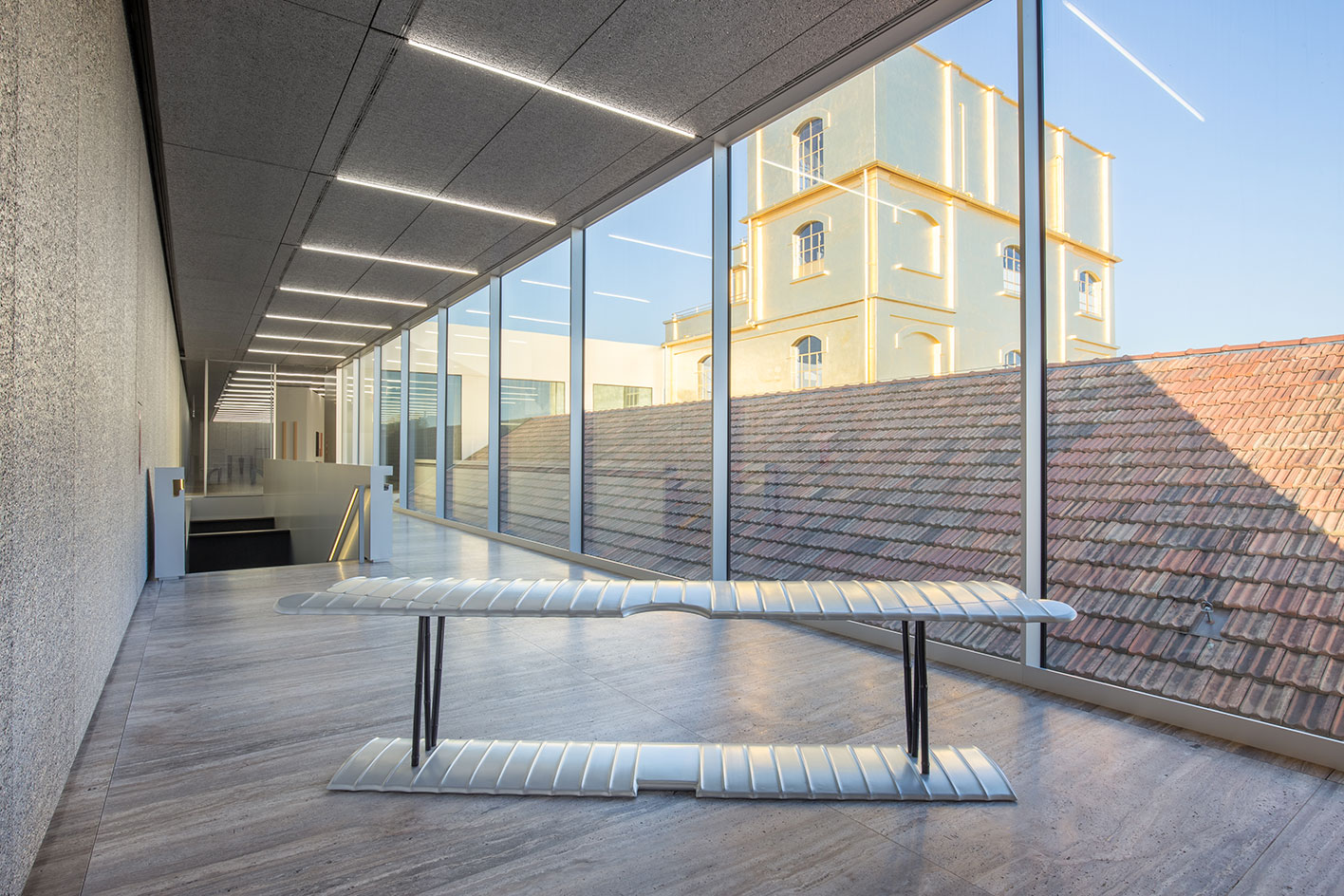
It seems entirely fitting that the frankly remarkable new Fondazione Prada kicks its curatorial programme into top gear with the meticulous speed-freak minimalism of Italian artist Gianni Piacentino. Curated by Germano Celant, the exhibition, taking over two levels of the complex’s Podium galleries, includes 100 pieces, covering Piacentino’s career from 1965 to today.
Turin-based Piacentino, now 72, was a key figure in the development of the Arte Povera movement but quickly went his own way. And quickly. Piacentino is obsessed with vintage motorbikes and aeroplanes and many of his works are pared down abstractions of these dream machines; bits of wing or engineless frames and chassis, but always precisely engineered and beautifully finished (Piacentino restores and repaints vintage bikes for fun and was, for a short while, a professional bike racer). A dab hand at everything from websites to print catalogues, Piacentino even produced a limited edition cover for Wallpaper* earlier this year (W*196).
Piacentino’s work is a kind of Pop influenced minimalism, high on speed and paint fumes and the heavy then delicate artisanship of the body shop. As Celant says, Piacentino’s art roars out of somewhere ‘between art and design, craftsmanship and manufacturing, the useful and the useless, singularity and seriality.’ And is born of a ‘background culture rich with applied sciences, artisan expertise, mechanical precision and engineering processes.’ Vroom vroom. Except not quite, not just. There is something plainly elegiac in the work, slow and reverent. For Celant, Piacentino’s career represents ‘an absolute escape from the imperfection, instantaneity and randomness of making art, in order to access a universe of perfection, calculation and concentration that can compete with a motor or flight vehicle, on both sublime and absolute levels.’
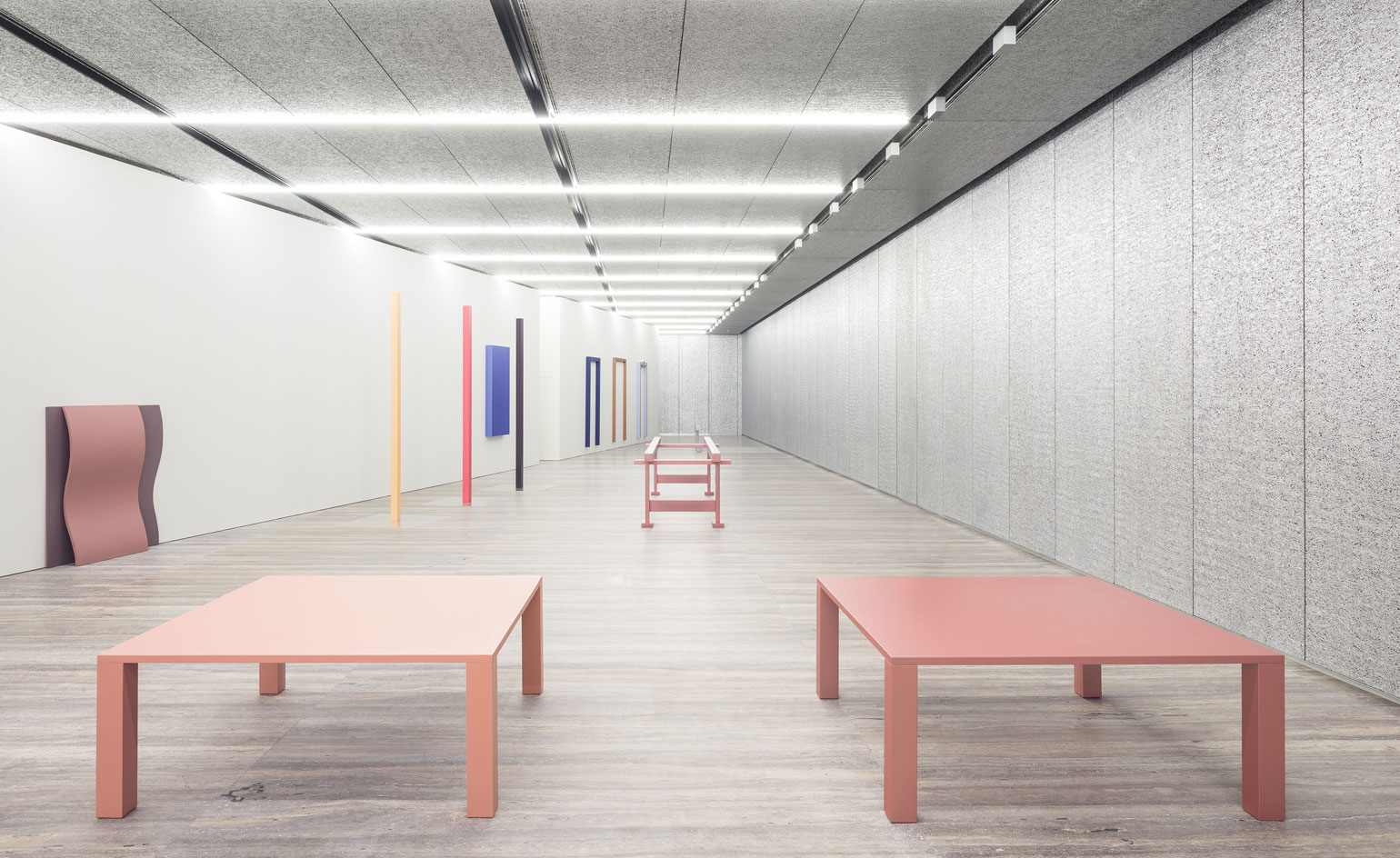
Curated by Germano Celant, the exhibition takes over two levels of the complex’s Podium galleries and includes 100 pieces, spanning Piacentino’s career from 1965 to present day.
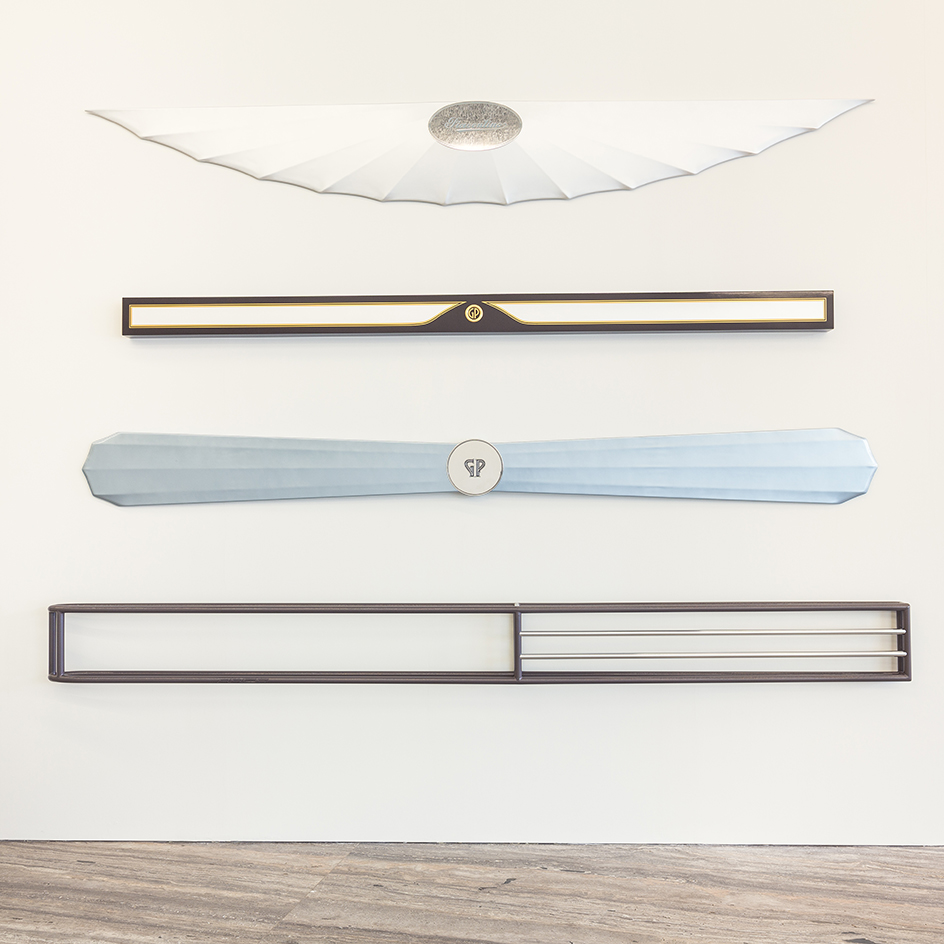
From top to bottom: Pearl wall wing with signed nickel plate, 1971; Amaranth and pearl decorated and initialed rectangular bar, 1971; Turquoise-gray pearl proppeller-wing with initialed nickel plate I, 1971; Race (F.H.W.) 3, 1991. Photography: Delfino Sisto Legnani. Courtesy: Fondazione Prada
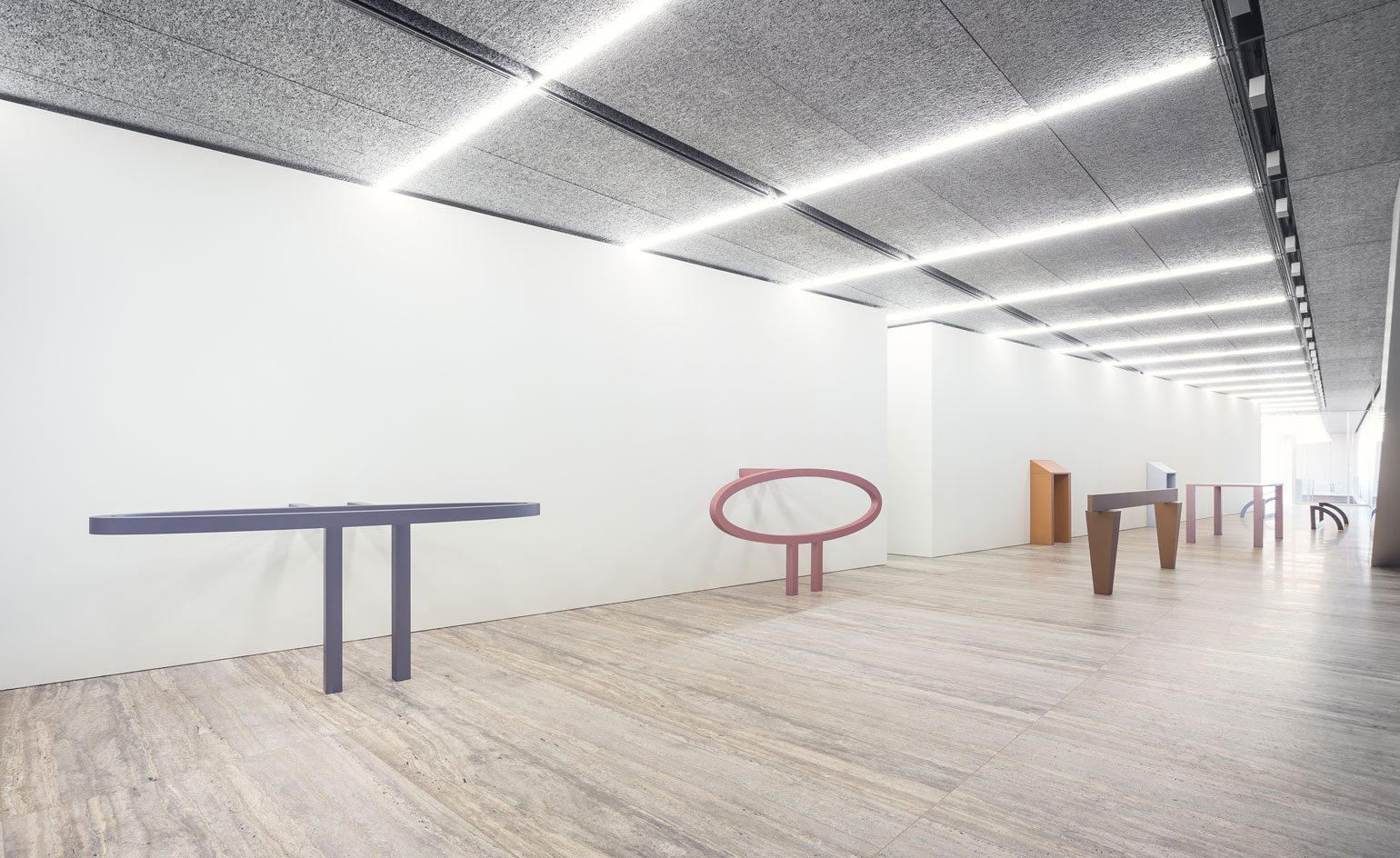
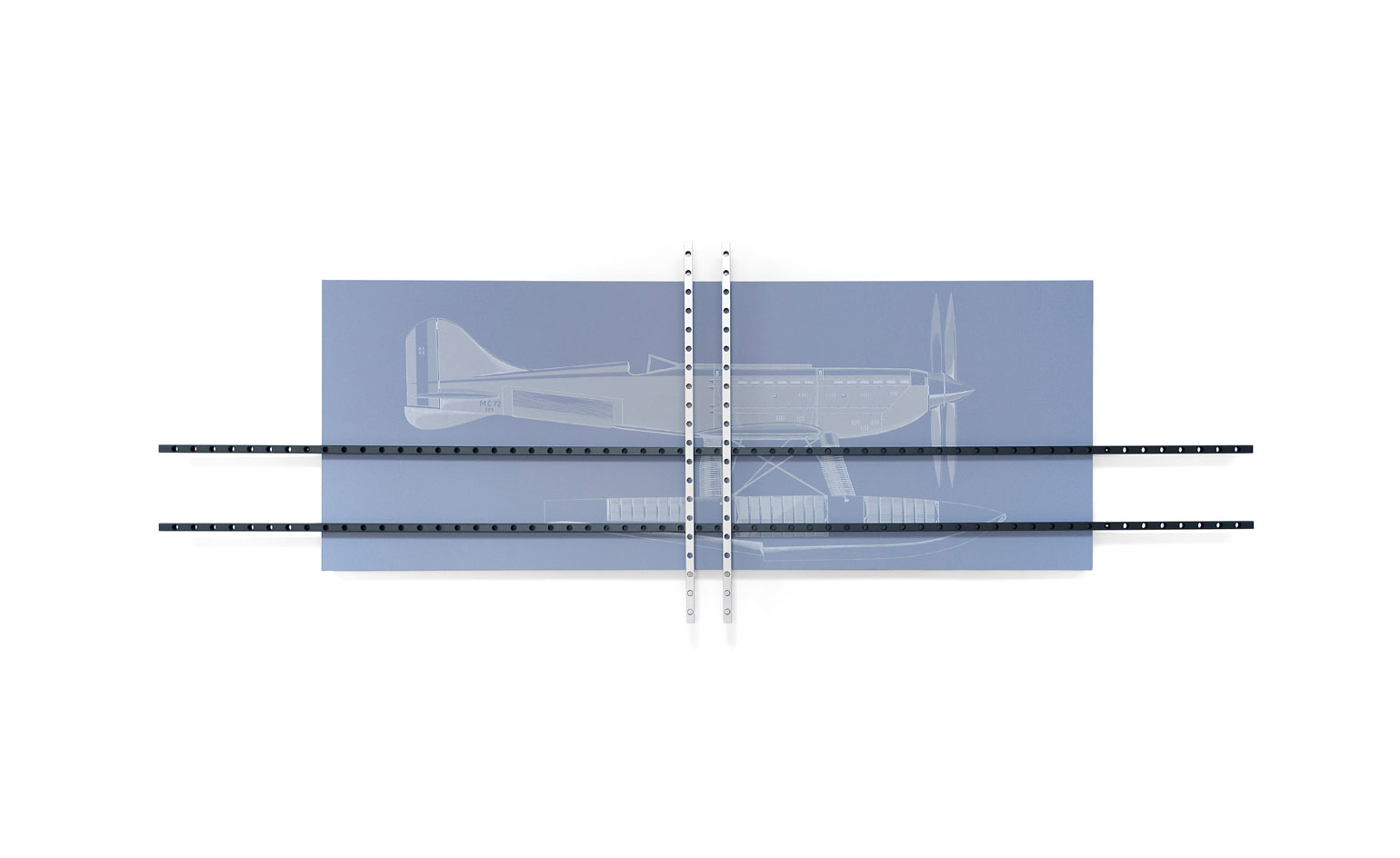
Pictured: Build Seaplane (MC72)_4, 2010.
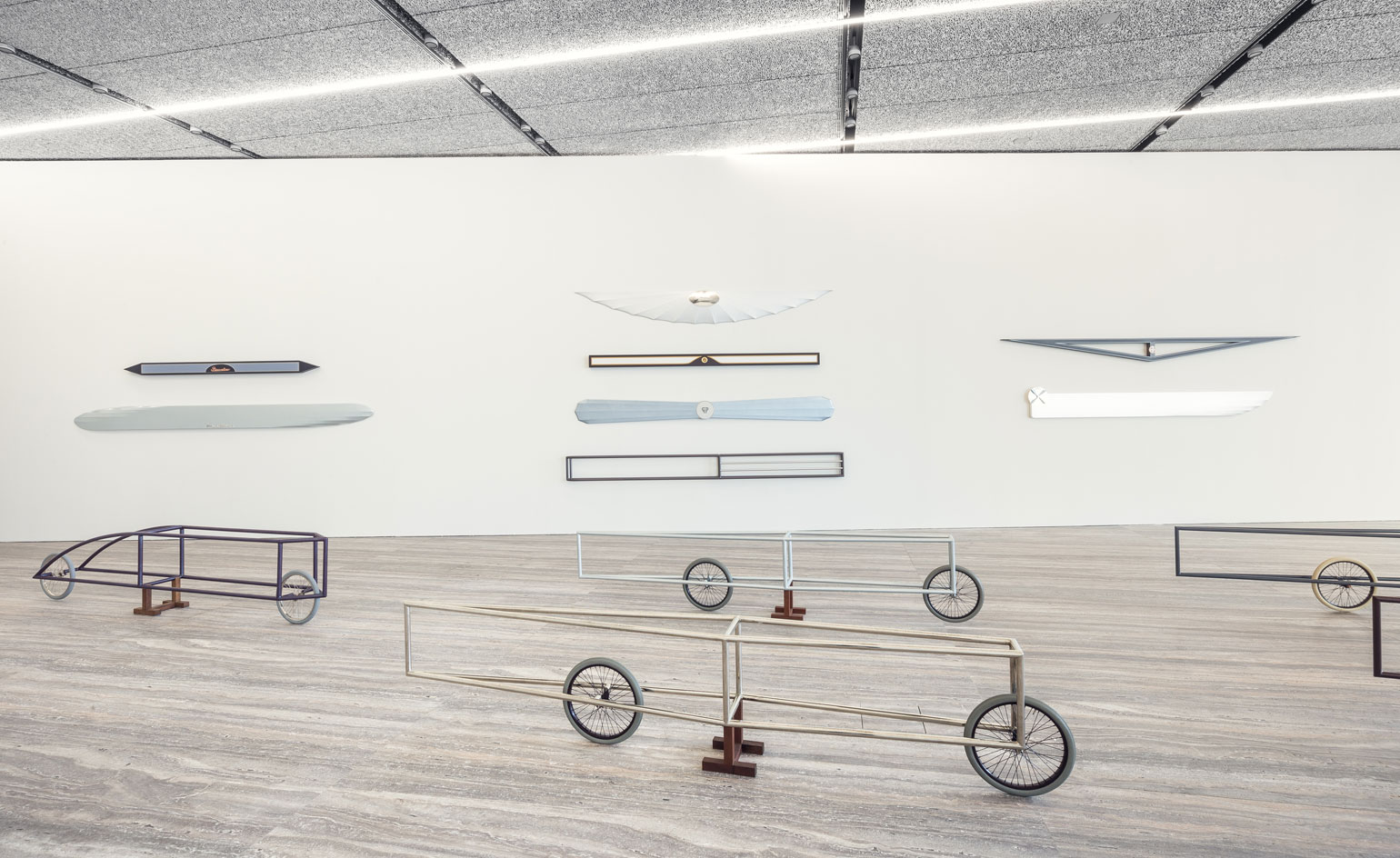
As Celant says, Piacentino’s art roars out of somewhere ‘between art and design, craftsmanship and manufacturing, the useful and the useless, singularity and seriality.’ Photography: Delfino Sisto Legnani. Courtesy: Fondazione Prada

Pictured left: Light-blue silver reading-desk object, 1967-1968. Right: Light-blue gray looking-glass object, 1967-1868.
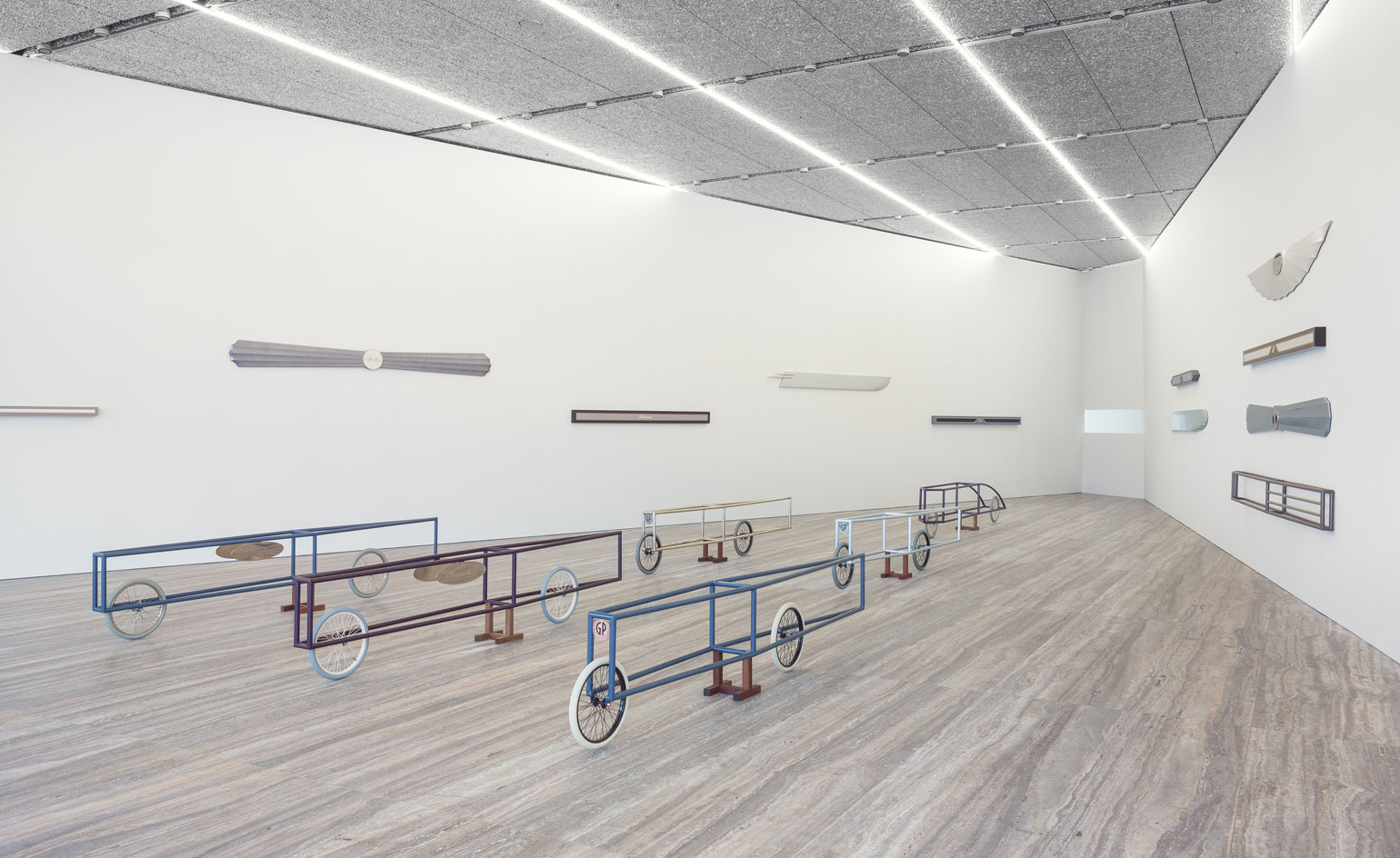
There is something plainly elegiac in the work, slow and reverent.
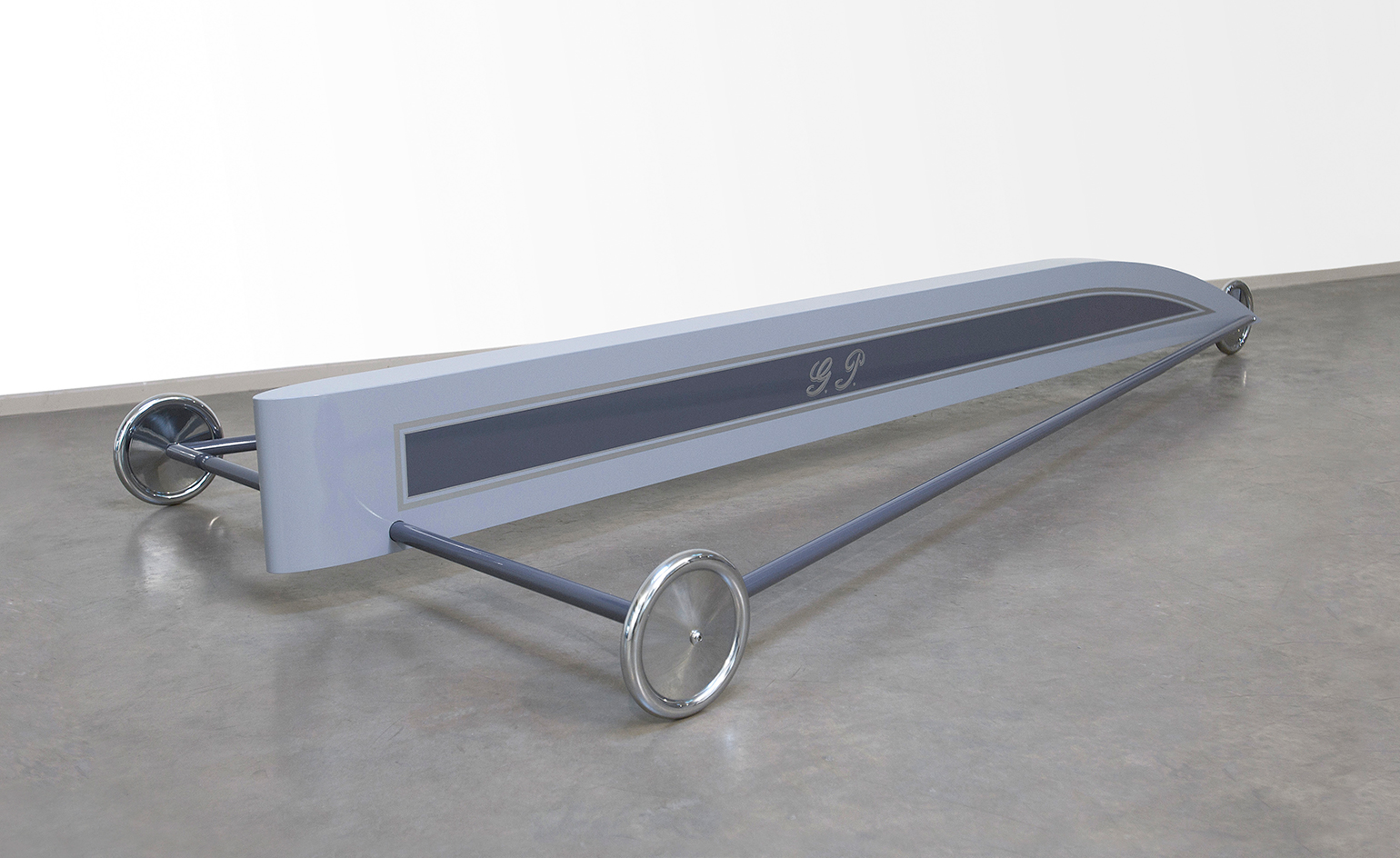
Pictured: Gray, purple-gray, silver triangle vehicle, 1971-1972.
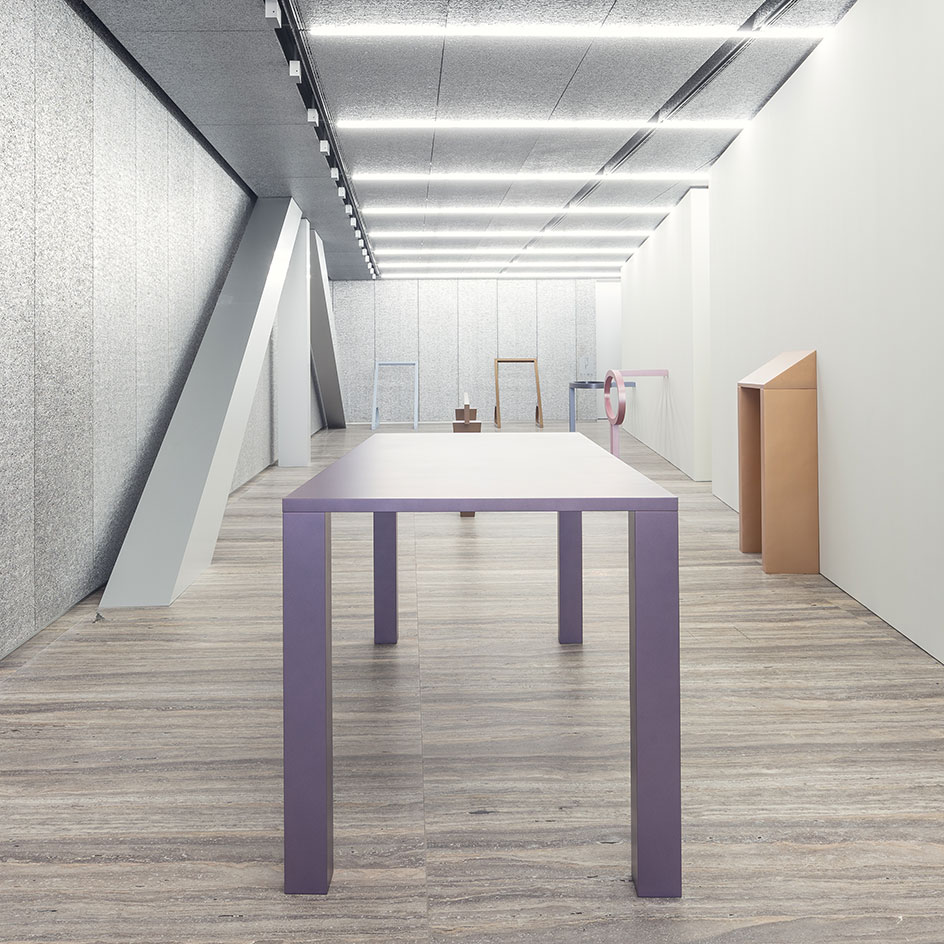
Pictured center: Matt metal brown-purple big table sculpture, 1967–68. Right: Metalloid orange-ochre reading-desk object, 1967–68. Photography: Delfino Sisto Legnani. Courtesy: Fondazione Prada
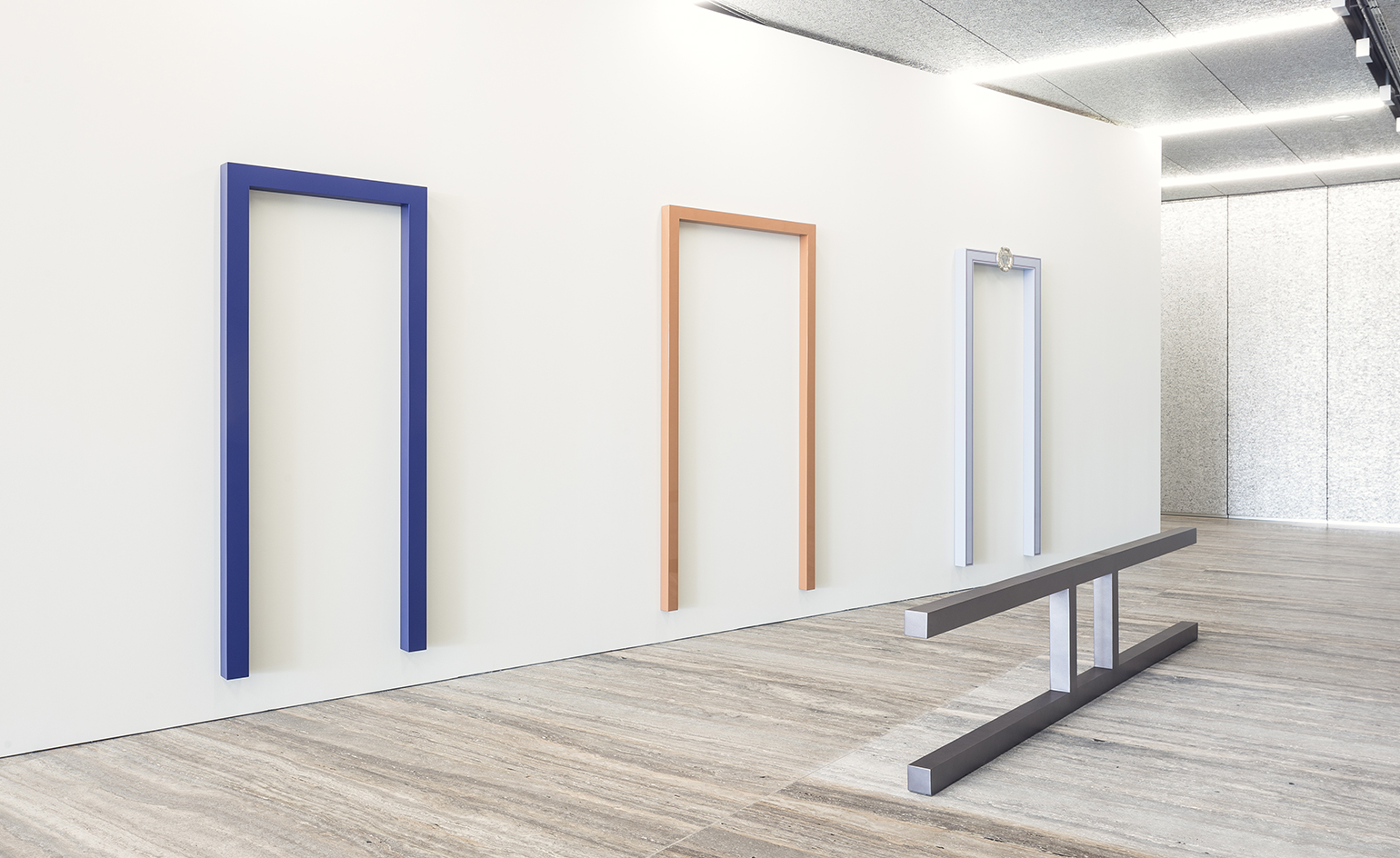
For Celant, Piacentino’s career represents ‘an absolute escape from the imperfection, instantaneity and randomness of making art, in order to access a universe of perfection, calculation and concentration that can compete with a motor or flight vehicle, on both sublime and absolute levels.’
INFORMATION
’Gianni Piacentino’ is on view until 10 January 2016 at Fondazione Prada website
Wallpaper* Newsletter
Receive our daily digest of inspiration, escapism and design stories from around the world direct to your inbox.
-
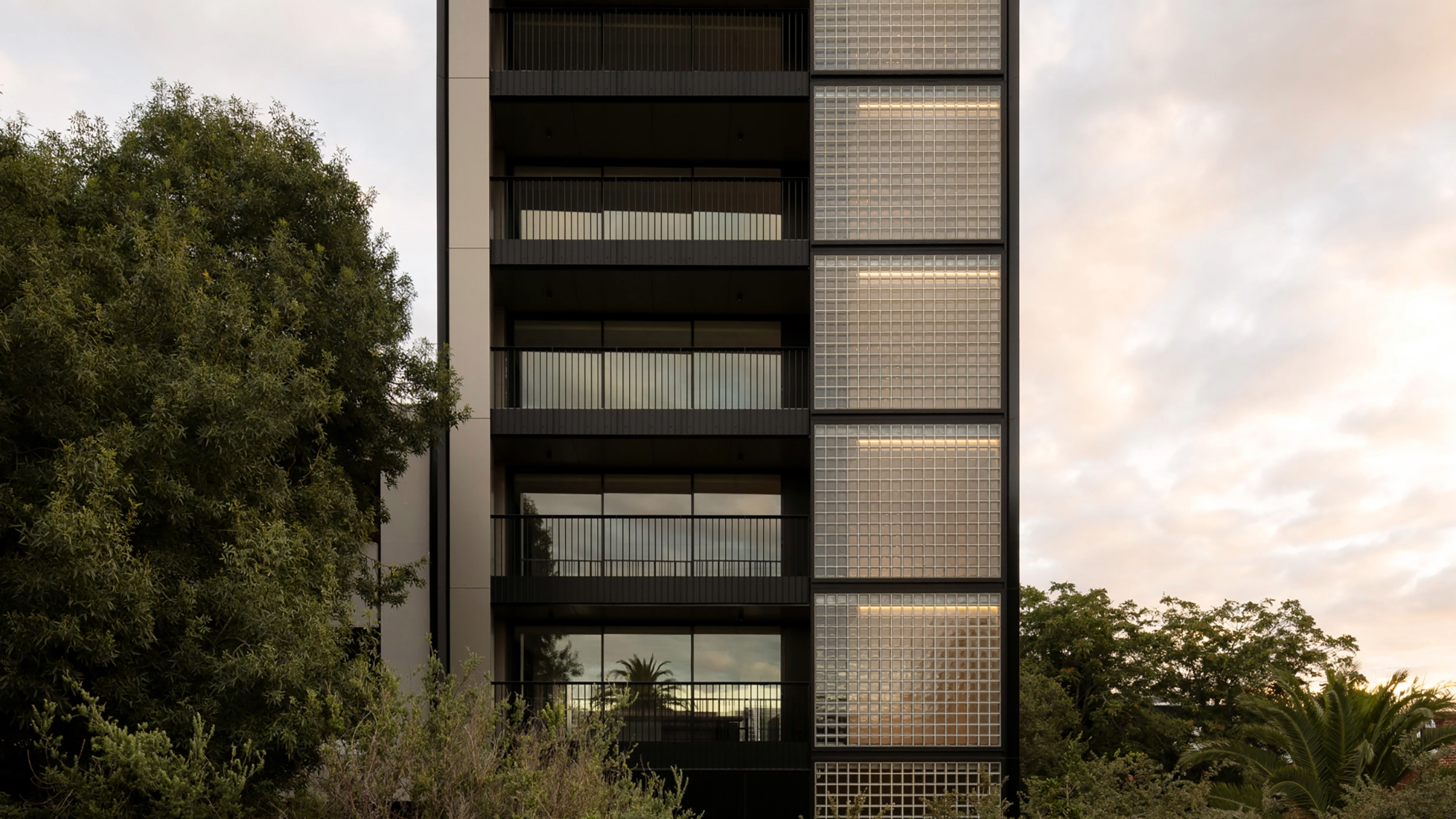 The humble glass block shines brightly again in this Melbourne apartment building
The humble glass block shines brightly again in this Melbourne apartment buildingThanks to its striking glass block panels, Splinter Society’s Newburgh Light House in Melbourne turns into a beacon of light at night
By Léa Teuscher Published
-
 Dimoremilano and Loro Piana channel 1970s cinema in decadent Milan display
Dimoremilano and Loro Piana channel 1970s cinema in decadent Milan displayAt Milan Design Week 2025, Dimorestudio has directed and staged an immersive, film-inspired installation to present new furniture and decor for Loro Piana
By Dan Howarth Published
-
 The new Google Pixel 9a is a competent companion on the pathway to the world of AI
The new Google Pixel 9a is a competent companion on the pathway to the world of AIGoogle’s reputation for effective and efficient hardware is bolstered by the introduction of the new Pixel 9a, a mid-tier smartphone designed to endure
By Jonathan Bell Published
-
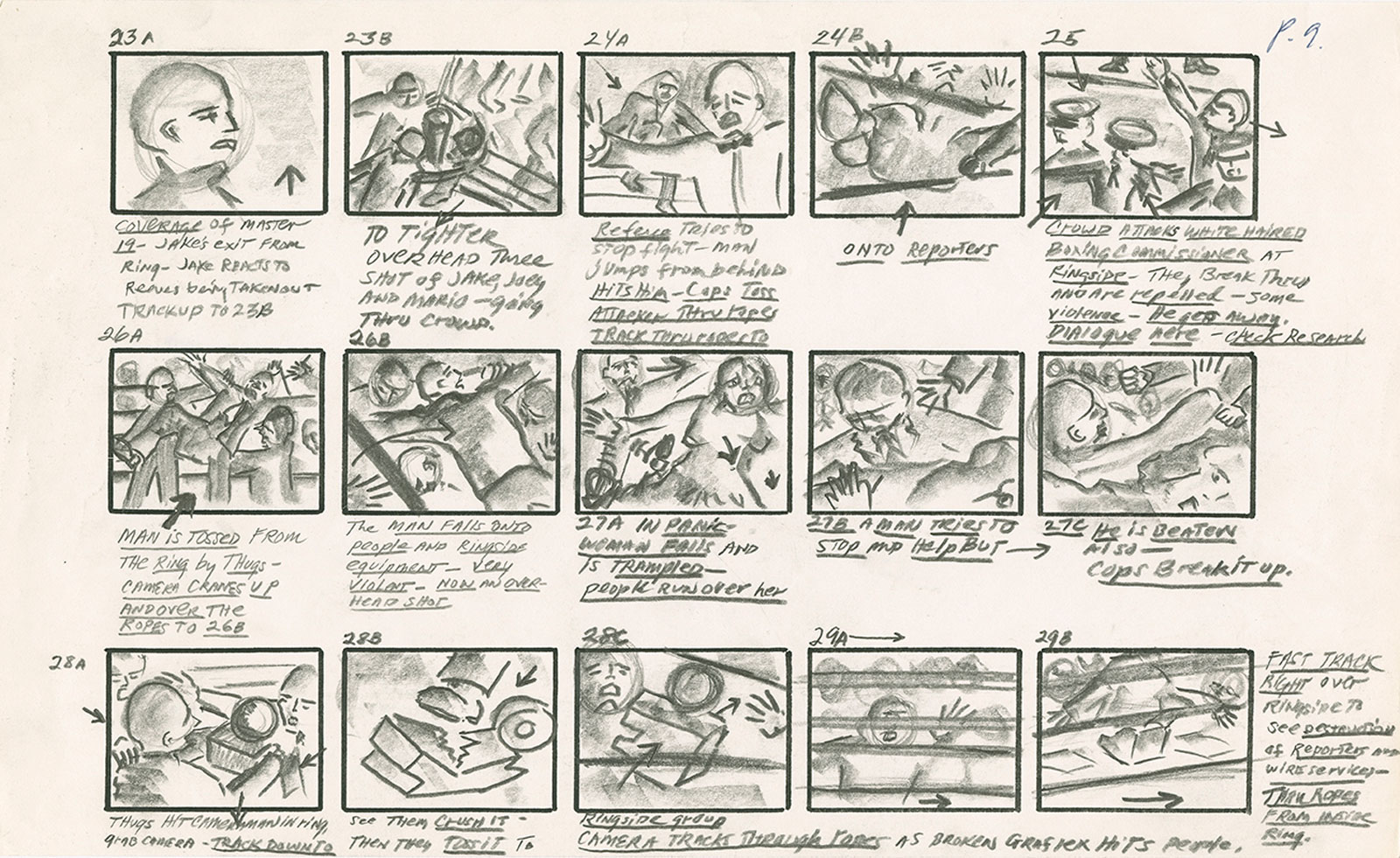 The creative mind at work: a century of storyboarding at Fondazione Prada
The creative mind at work: a century of storyboarding at Fondazione PradaFondazione Prada’s 'Osservatorio, A Kind of Language: Storyboards and Other Renderings' features some of the most celebrated names in cinema working from the late 1920s up to 2024
By Mary Cleary Published
-
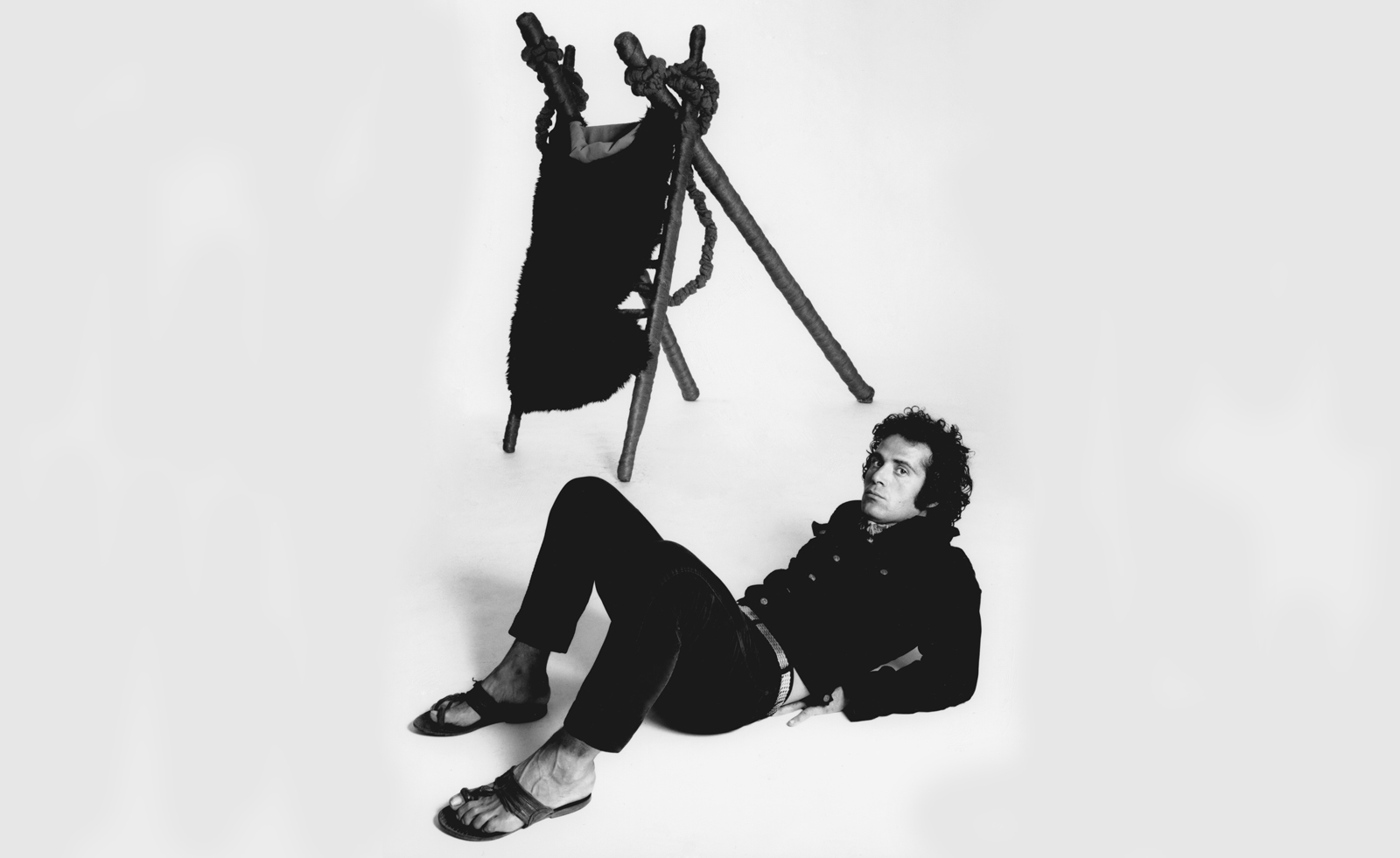 Pino Pascali’s brief and brilliant life celebrated at Fondazione Prada
Pino Pascali’s brief and brilliant life celebrated at Fondazione PradaMilan’s Fondazione Prada honours Italian artist Pino Pascali, dedicating four of its expansive main show spaces to an exhibition of his work
By Kasia Maciejowska Published
-
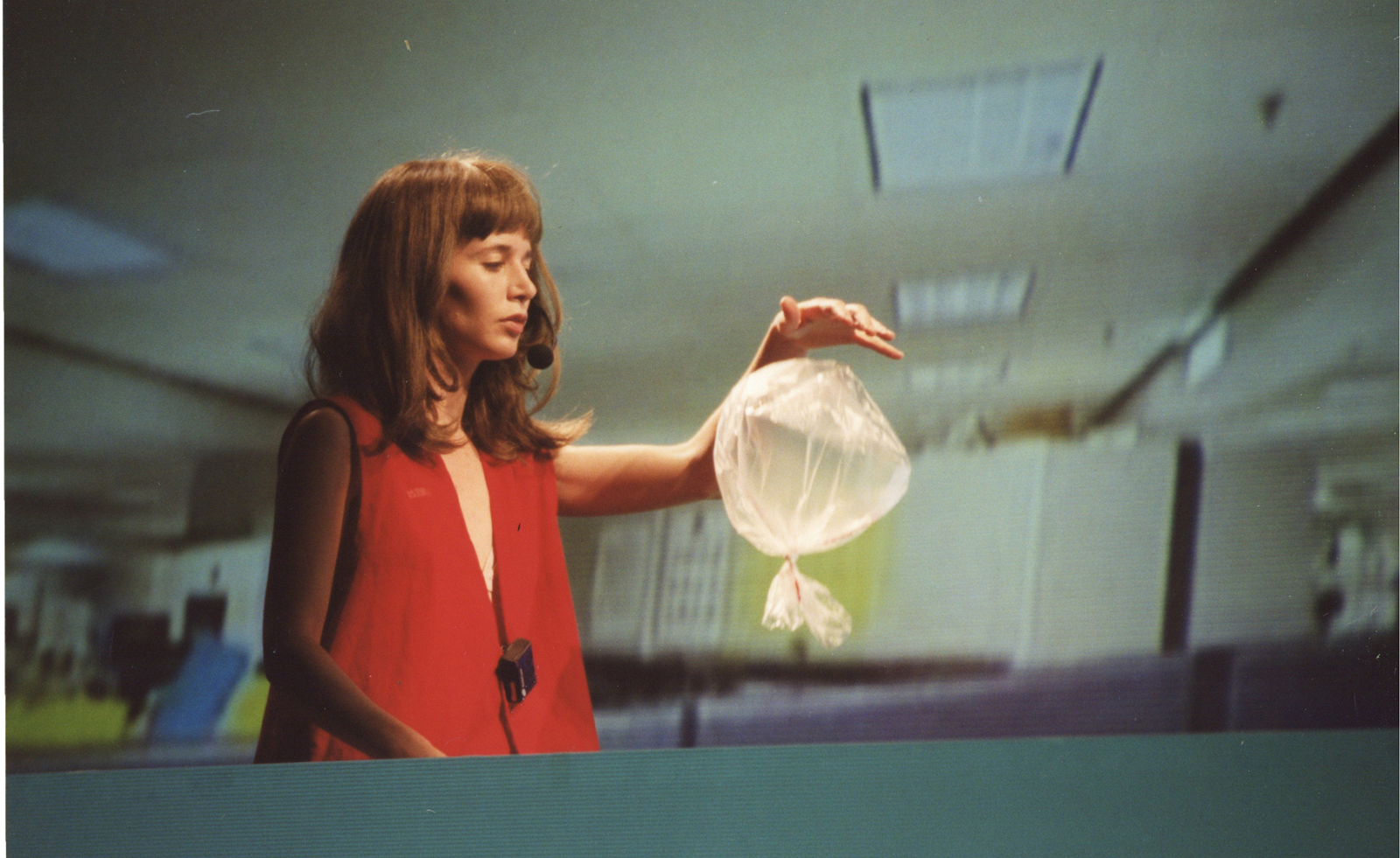 Miranda July considers fantasy and performance at Fondazione Prada
Miranda July considers fantasy and performance at Fondazione Prada‘Miranda July: New Society’ at Fondazione Prada, Milan, charts 30 years of the artist's career
By Mary Cleary Published
-
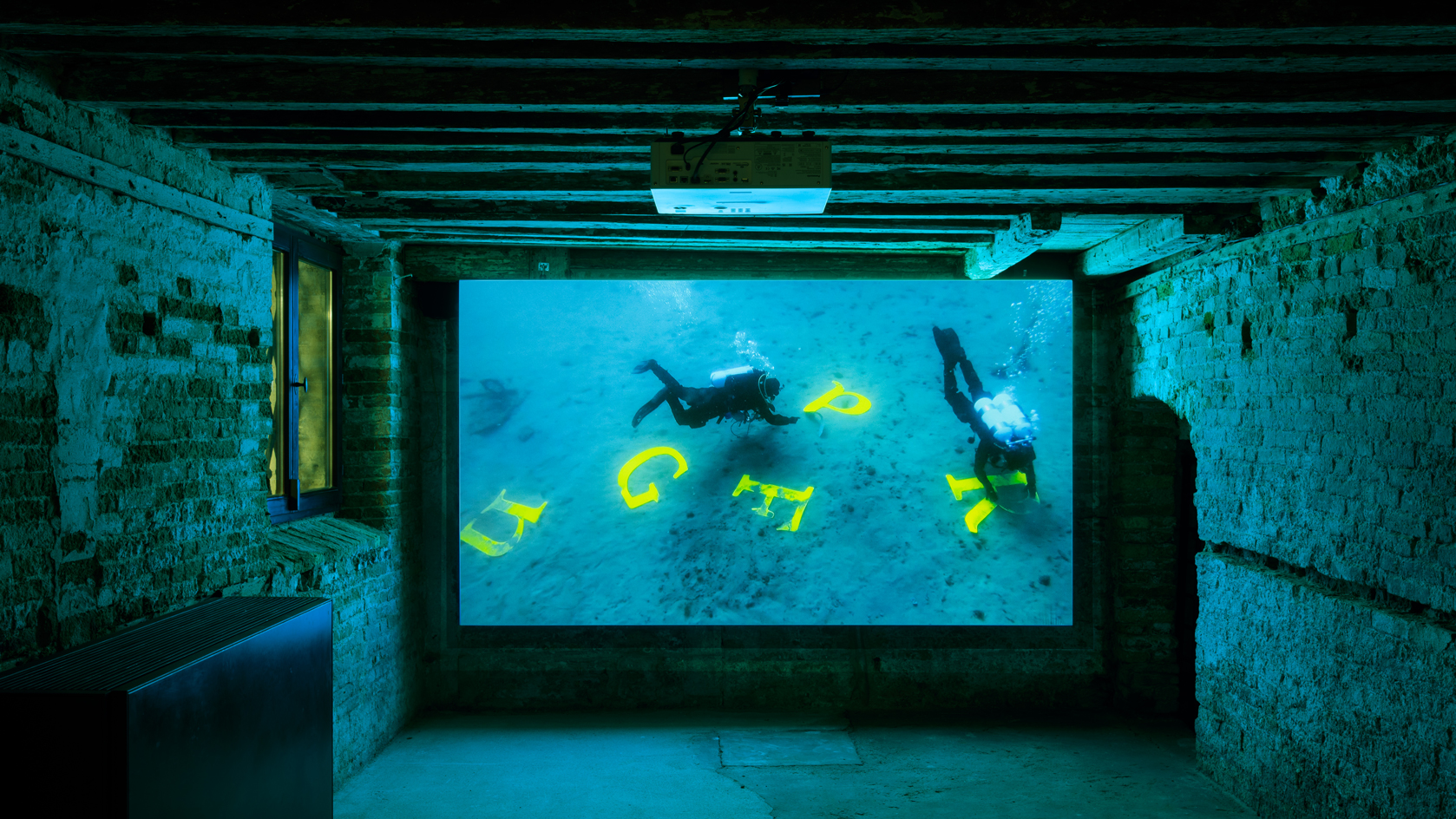 Fondazione Prada exhibition is an ode to a vanishing Venice
Fondazione Prada exhibition is an ode to a vanishing VeniceAt Fondazione Prada’s 18th-century Venice palazzo, group exhibition ‘Everybody Talks About the Weather’ straddles beauty and fear and probes Venice’s precarious environmental future
By Will Jennings Published
-
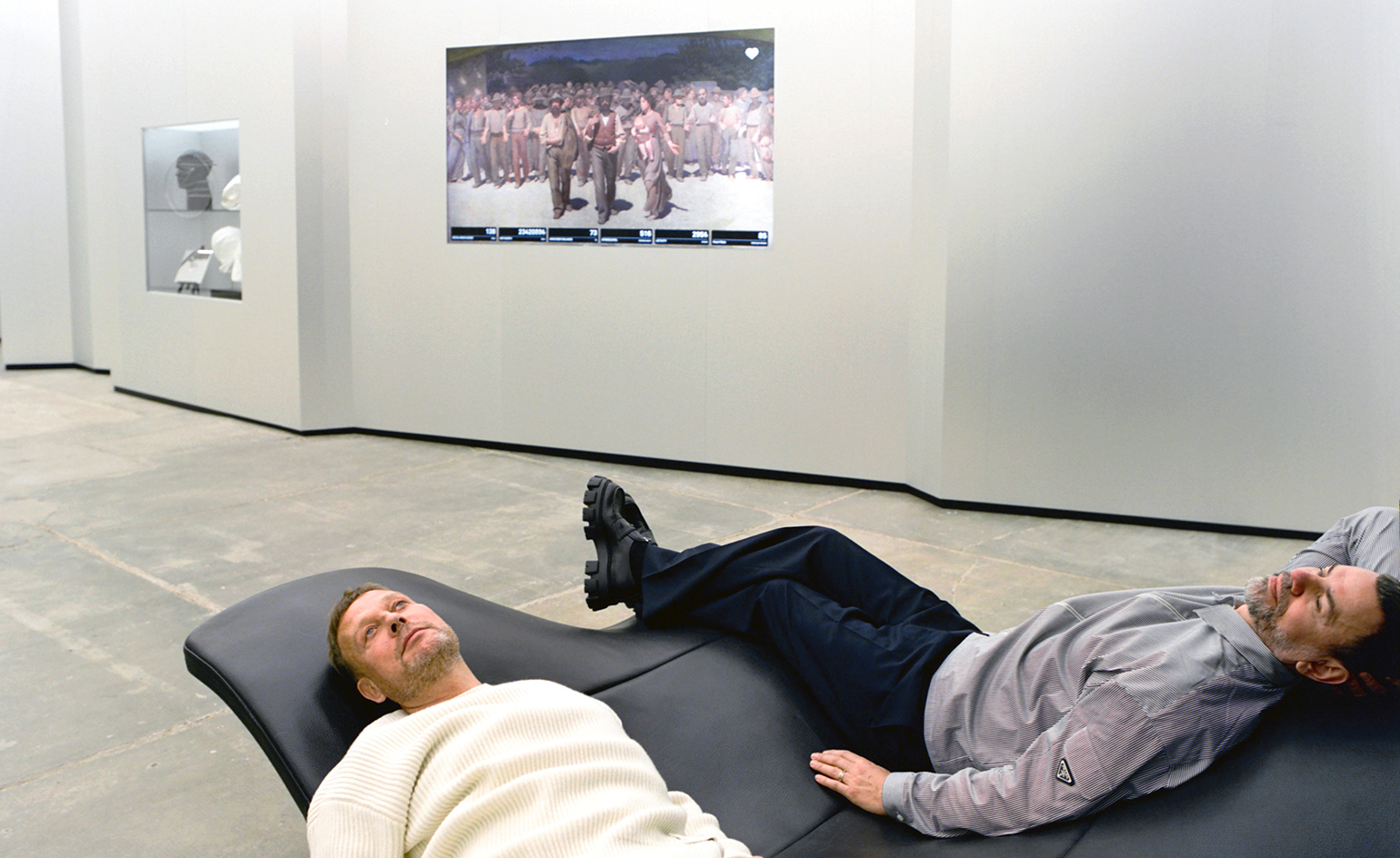 Elmgreen & Dragset in Milan: bodies, minimalism and home discomforts
Elmgreen & Dragset in Milan: bodies, minimalism and home discomfortsElmgreen & Dragset’s new show at Milan’s Fondazione Prada is an uncanny exploration of our dematerialising bodies and increasingly discomforting homes
By TF Chan Last updated
-
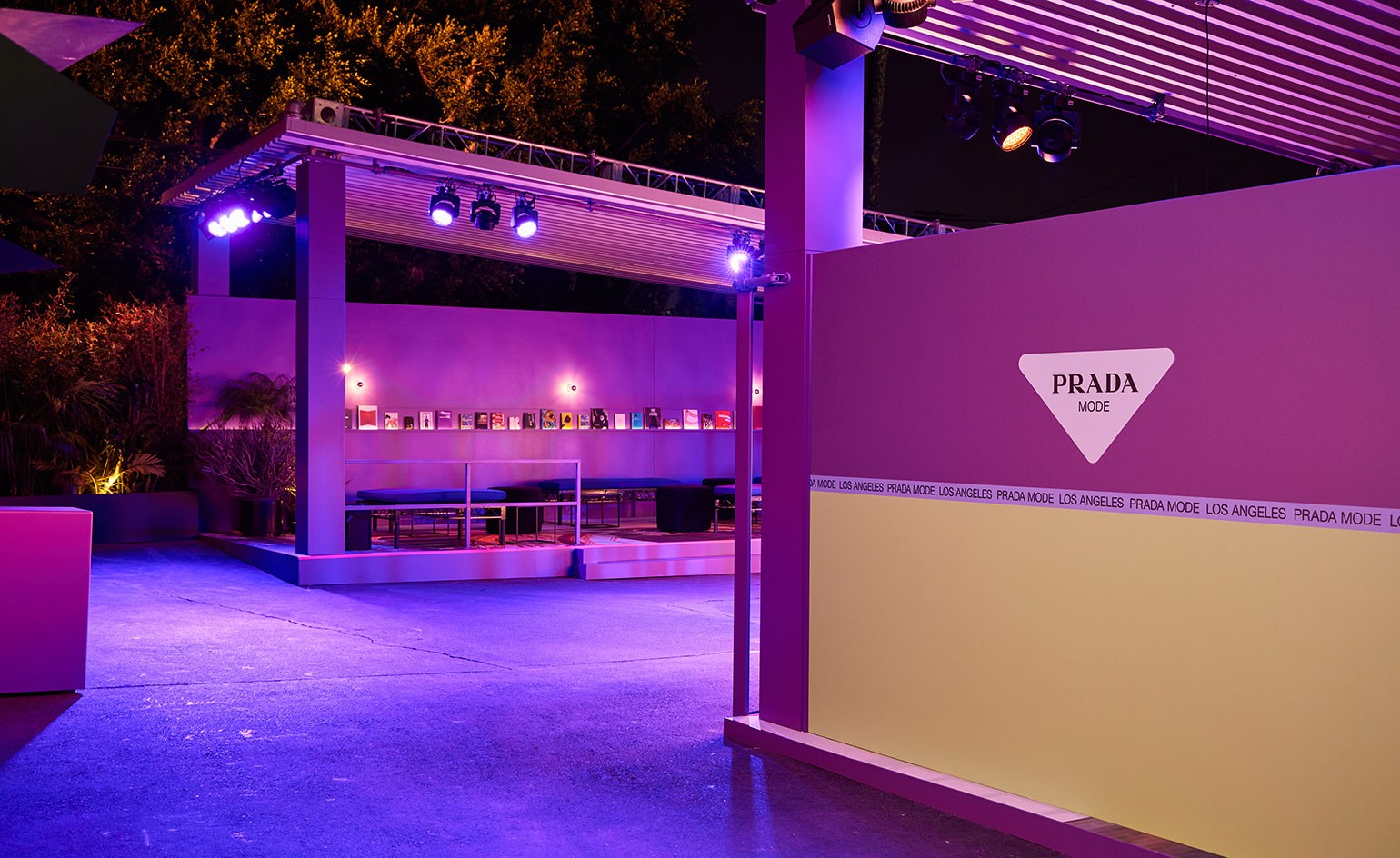 Fashion's finest moments at Frieze Los Angeles 2022
Fashion's finest moments at Frieze Los Angeles 2022By Laura Hawkins Last updated
-
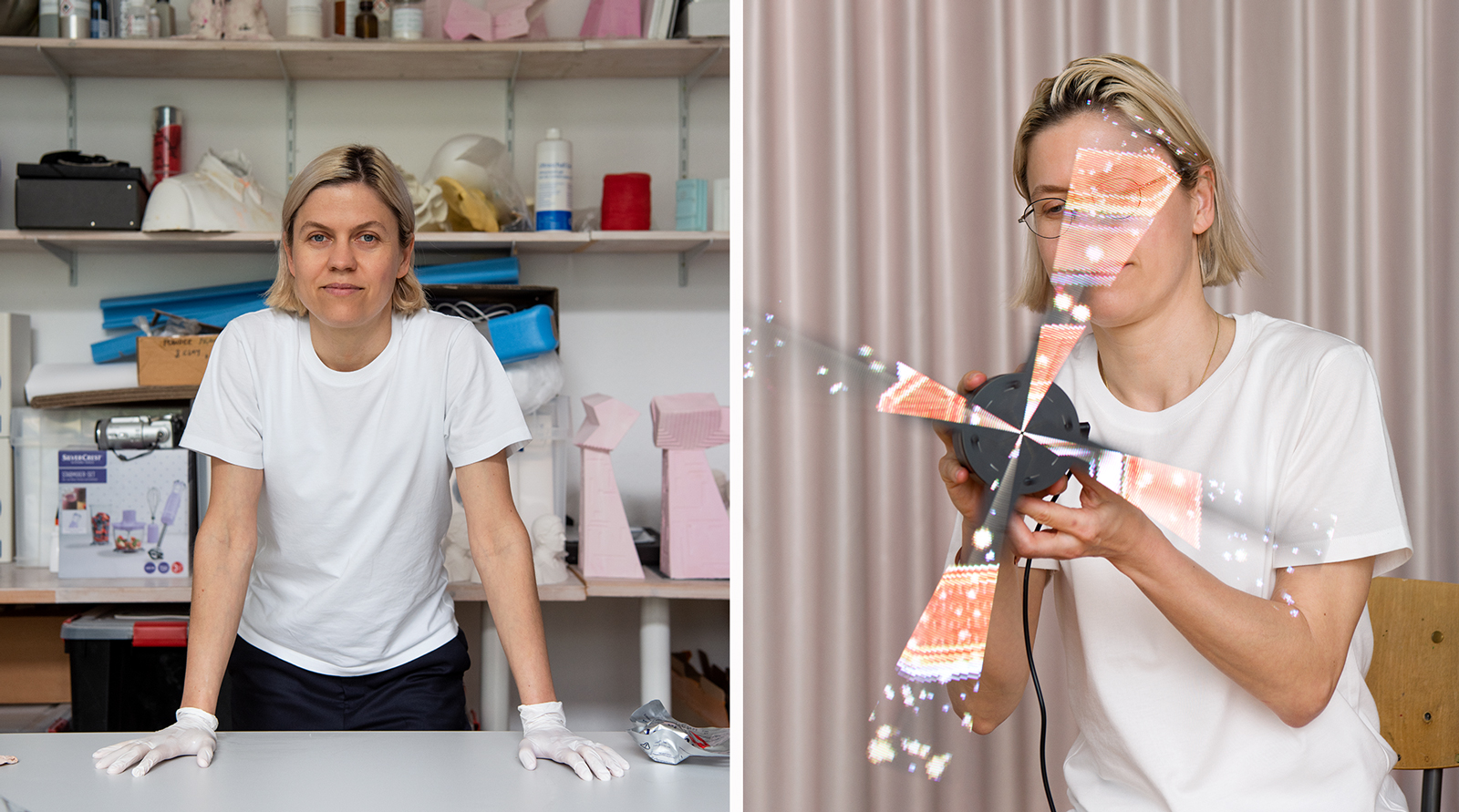 Aleksandra Domanović rethinks the relationship between reality and illusion in Berlin
Aleksandra Domanović rethinks the relationship between reality and illusion in BerlinCommissioned by Audemars Piguet Contemporary, Becoming Another by Aleksandra Domanović will be on show in Berlin, 17 September – 10 October 2021
By Hannah Silver Last updated
-
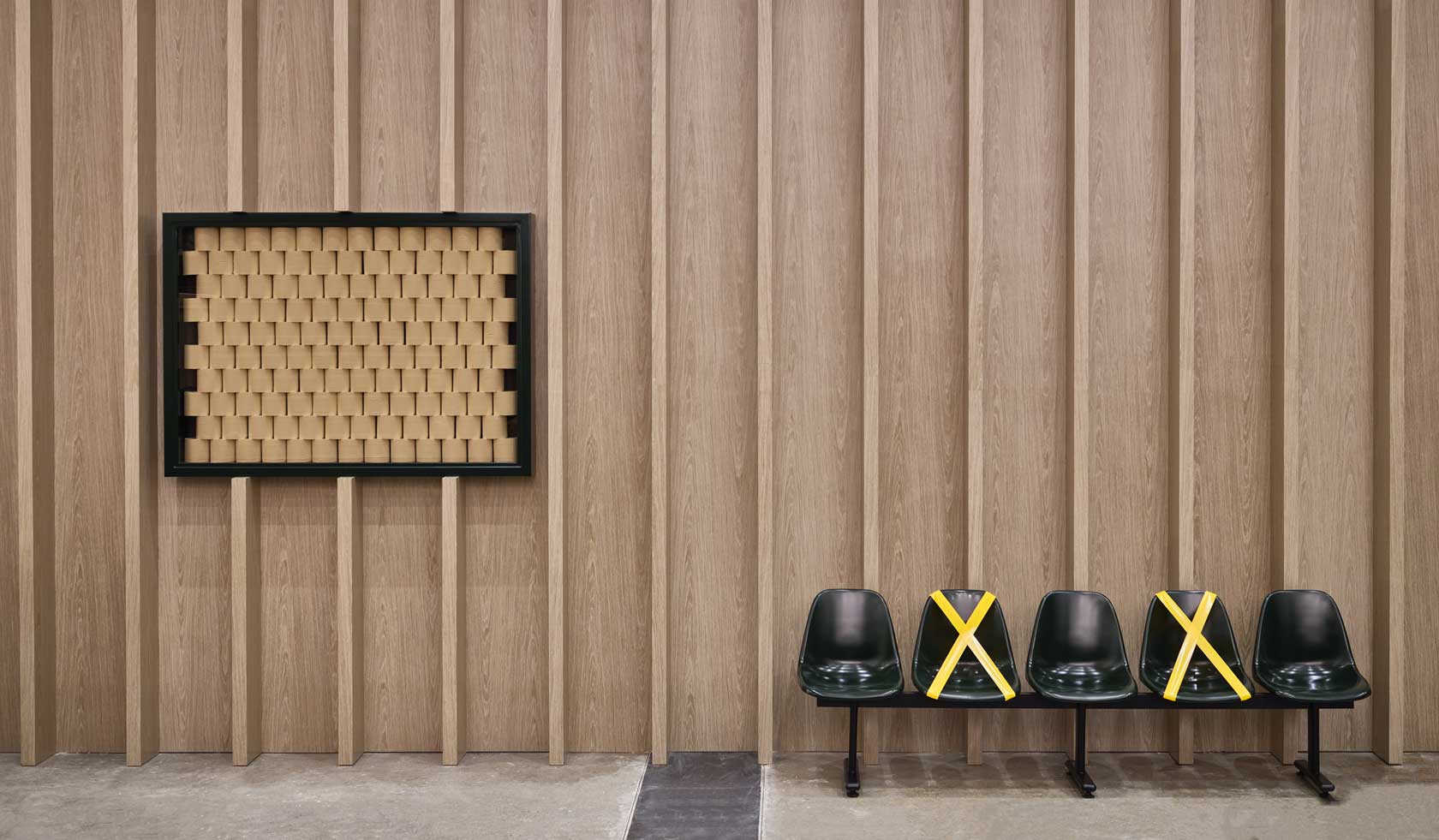 Cao Fei on collective confinement and the significance of home
Cao Fei on collective confinement and the significance of homeThe Chinese multimedia artist’s new installation at the West Bund Art & Design Fair in Shanghai meditates on humanity’s capacity to unite in shared isolation
By Harriet Lloyd-Smith Last updated